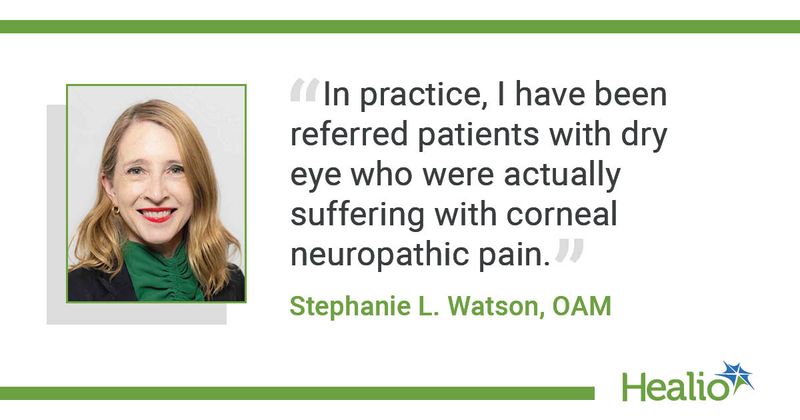Corneal neuropathic pain management may require a multidisciplinary approach
Click Here to Manage Email Alerts
Key takeaways:
- Corneal neuropathic pain is often misdiagnosed as dry eye disease.
- Proper management may require addressing the ocular surface and mental health conditions.
Diagnosis and treatment of corneal neuropathic pain may require a multidisciplinary approach, including comprehensive ocular assessment as well as medical and mental health history examinations, according to a report published in Eye.
Corneal neuropathic pain (CNP) can have many etiologies. This, along with a lack clinical signs and ancillary tests, can make the condition difficult to diagnose. It also may share similarities to severe and chronic forms of dry eye disease (DED), which may lead to misdiagnosis and inadequate treatment, according to the report.

“In practice, I have been referred patients with dry eye who were actually suffering with corneal neuropathic pain,” Stephanie L. Watson, OAM, of Sydney Eye Hospital and lead author of the report, told Healio. “This was an important diagnosis to make, as it enabled their treatment to be directed toward managing the pain with improved outcomes.”
When diagnosing CNP, ophthalmologists should review a patient's ocular history, as conditions including DED, infectious keratitis, herpes simplex keratitis, herpes zoster ophthalmicus, recurrent corneal erosion and radiation keratopathy have been associated with CNP.
“CNP may also occur with other ocular conditions or following trauma or surgery (eg, cataract and refractive surgery),” the authors wrote.
In addition, medical history intake for patients experiencing CNP should include mental health questionnaires due to reported links between pain intensity and conditions such as posttraumatic stress disorder and depression.
After diagnosis, topical steroids such as cyclosporine may help mitigate inflammation and oral therapies such as gabapentin or pregabalin may reduce nerve pain. Topical nerve growth factors such as lacosamide 1%, which has been categorized as a Schedule V drug by the FDA, are also under investigation for CNP, according to the report.
Overall, effective treatment may require multiple specialists to assist with oral and behavioral therapies and to provide mental health support.
“I was pleased to find that there are a range of treatment options for patients with corneal neuropathic pain,” Watson told Healio. “A range of professionals can also assist with management, including general practitioners, psychologists and migraine neurologists,” Watson said.
As Healio previously reported, the FDA granted the first clearance of an investigational new drug application for neuropathic corneal pain earlier this year.

